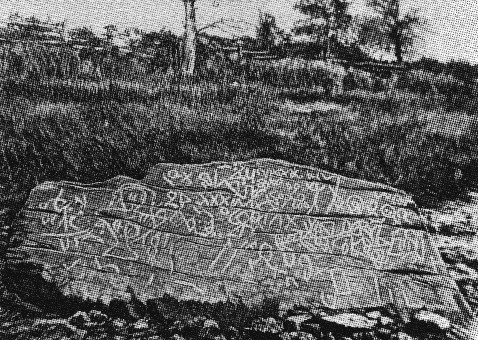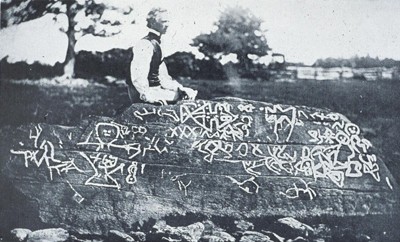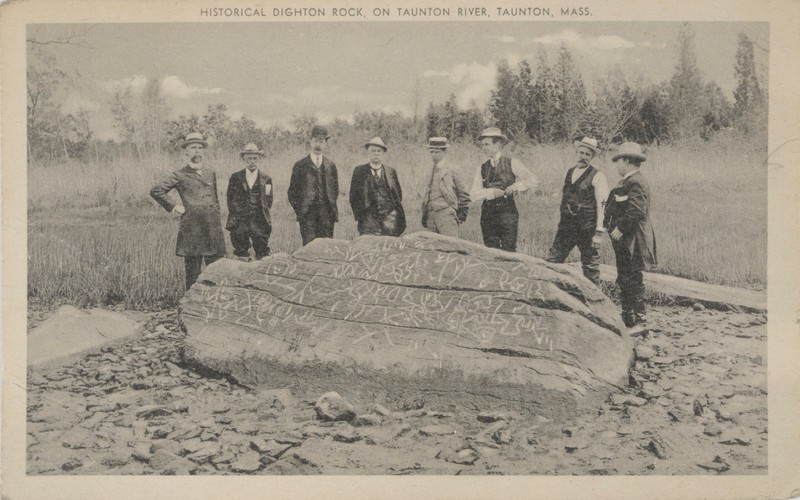Dighton Rock State Park and Museum
Introduction
Text-to-speech Audio
Images
Dighton Rock

Dighton Rock

Dighton Rock

Backstory and Context
Text-to-speech Audio
When Dighton rock was still in the river it was under water almost all day. When the river would become ice, it stayed below the ice, which prevented the rock’s images from being damaged.1 In 1963, the 40 ton Dighton Rock was moved from the Taunton River and 10 years after that it was put into a glass casket and the museum was constructed around it. The museum does not have any staff and according to Park Service workers there are not several tourists that come to see the rock. There are not any other items dedicated to Dighton Rock at the museum.2 Dighton Rock was named a Historical Site in 1975.1
Theories on the authors of the images on Dighton Rock started in 1677.3 Many have suggested that the images on the rock are credited to the Wampanoag Native Americans, the Phoenicians, the Vikings, the Portuguese, and the Chinese. For a while many leaned more towards the Vikings theory; this can really be seen among the Protestants in New England who wished that the founder of the country be a different person than the Catholic Christopher Columbus.2 However, in 1960 it was discovered that a Viking landing location site on the continent was as far as Newfoundland.3 Even though this theory is not so heavily supported or believed today, some still believe that it is a possibility.2
It was in the 1900s that the idea about the possible authors of the images being the Portuguese surfaced. The connection is made based on a stranded Portuguese adventurer from the 1500s named Miguel Cortereal. However, there are several people who do not believe this idea. Samuel Eliot Morison proposed that Algonquian Native Americans made the images and that more were made by people passing by over the years. Although visitation to the museum is upon request, tourists can freely visit the park.3
